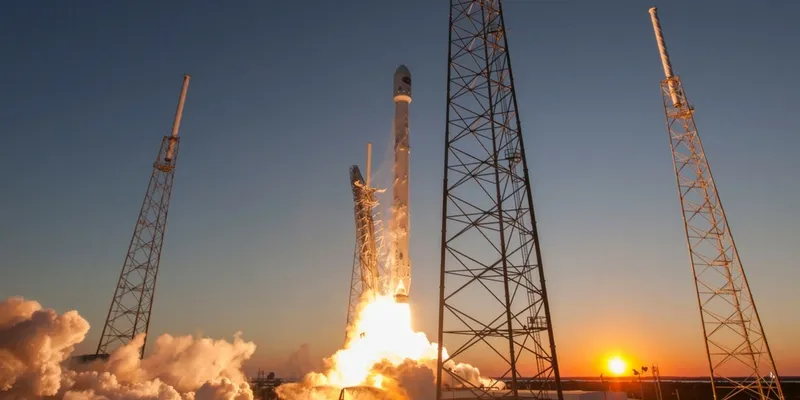SpaceX launches 50th Falcon 9 mission, carrying its biggest payload ever
Aerospace manufacturer transport company SpaceX, founded by billionaire innovator Elon Musk, marked another historic milestone earlier today. Its Falcon 9 rocket blasted off on its 50th mission, carrying the company’s largest-ever payload into space. The rocket deployed a US-built commercial communications satellite owned by Spanish firm Hispasat; the satellite, dubbed Hispasat 30W-6 weighs 13,400 pounds (about 6,078 kg) – roughly the size of a city bus. The geostationary communications satellite successfully attained orbit more than 22,000 miles (almost 36,000 km) above the equator after blasting off from Cape Canaveral in Florida, US.

The first version Falcon 9 rocket – v1.0 – started service with SpaceX in 2010 and flew five missions, before being replaced by the second version v1.1 in 2013. v1.1 Falcon 9 rockets flew 15 missions for SpaceX between 2013 and 2015; the current “Full Thrust” v1.2 version has been in service since December 2015. The company tends to refer to all three versions as one extended family, taking the total number of missions to 50 with the latest launch. The Falcon Heavy launch in early February is essentially three Falcon 9 first stages grouped together; SpaceX Founder and CEO Elon Musk has said there are plans for a fourth and final version – Falcon 9 Block 5 – that will feature minor improvements for recovery and reuse.
One of Falcon 9’s biggest successes has been SpaceX’s ability to recover the initial booster stage after its flight, thereby reusing it for future missions and drastically lowering costs. However, in the case of the latest launch, recovery was not possible due to “rough weather” and the booster was allowed to make a controlled landing in the Atlantic Ocean. This was also the fourth Falcon 9 mission in 2018 and was originally scheduled for February 25, but extra testing carried out by SpaceX pushed the launch date back.
Hispasat 30W-6 contains a tri-band communications payload that will allow delivery of high-speed internet and satellite television across the Americas and the Caribbean, North Africa, Europe, and the Mediterranean region, with a particular focus on Spain and Portugal. Speaking after the launch, Hispasat CEO Carlos Espinos said, “This new satellite will allow us to meet the growing connectivity demand detected in the market...In the hyperconnected world in which we live, access to quality broadband is an essential need for economic, social and even personal development, and this satellite fulfils this need in places other technologies cannot reach. Hispasat 30W-6 allows us to broaden capacity and services while completing the current phase of the company’s growth plan.”
SpaceX has 30 missions scheduled for 2018, almost doubling the number from 18 in 2017. These include about six Falcon 9 missions planned for the next two months, starting with a March 29 flight with voice and data relay satellites, and a resupply flight to the International Space Station in early April. This is also likely to be followed by another Falcon 9 launch in early to mid-April carrying Bangladesh’s first communications satellite. This packed launch schedule is in line with Elon’s push to have SpaceX do more regular launches this year, including further testing of the Falcon Heavy and development of the company’s next-generation launch craft – the BFR.







